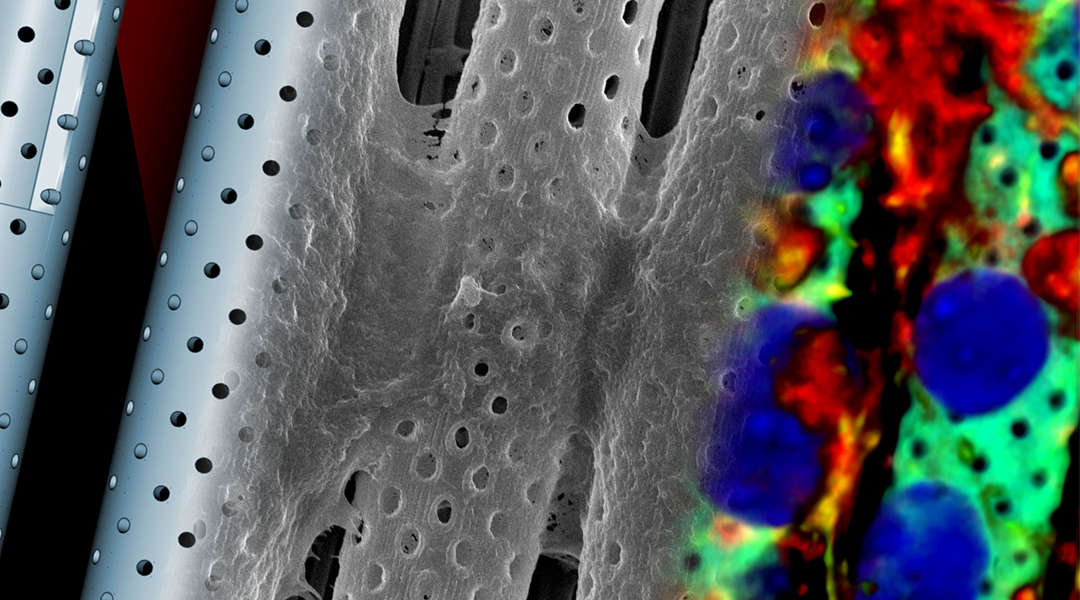Gianni Ciofani of ITT Pisa has created a device that reproduces a 1:1 scale model of the blood-brain barrier. The combination of 3D printed artificial and biological components will allow the study of new therapeutic strategies to overcome the blood-brain barrier and treat brain diseases, including tumors, Alzheimers, and multiple sclerosis.
A laser that scans through a liquid photopolymer and solidifies the material locally and layer by layer built complex 3D objects with submicron resolution. This enabled the researchers to engineer an accurate real-scale model of the BBB made from a photopolymer resin. Mimicking the brain microcapillaries, the model consists of a microfluidic system of 50 parallel cylindrical channels connected by junctions and featuring pores on the cylinder walls. Each of the tubular structures has a diameter of 10 μm and pores of 1 μm diameter uniformly distributed on all cylinders. After the fabrication of the complex scaffold-like polymer structure, endothelial cells were cultivated around the porous microcapillary system. Covering the 3D printed structure, the cells built a biological barrier resulting in a biohybrid system which resembles its natural model. The device is few millimeters big and fluids can pass through it at the same pressure as blood in brain vessels.
Join ApplySci at Wearable Tech + Digital Health + Neurotech Silicon Valley on February 26-27, 2018 at Stanford University. Speakers include: Vinod Khosla – Justin Sanchez – Brian Otis – Bryan Johnson – Zhenan Bao – Nathan Intrator – Carla Pugh – Jamshid Ghajar – Mark Kendall – Robert Greenberg – Darin Okuda – Jason Heikenfeld – Bob Knight – Phillip Alvelda – Paul Nuyujukian – Peter Fischer – Tony Chahine – Shahin Farshchi – Ambar Bhattacharyya – Adam D’Augelli – Juan-Pablo Mas – Shreyas Shah– Walter Greenleaf – Jacobo Penide – David Sarno – Peter Fischer
**LAST TICKETS AVAILABLE
